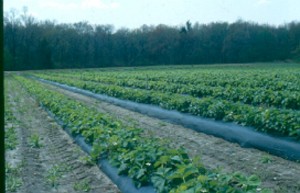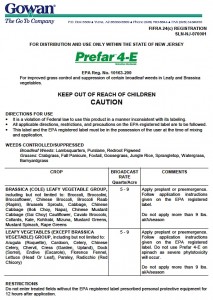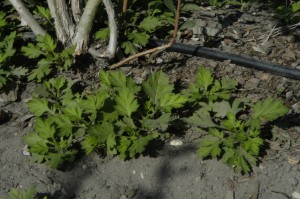Excellent safety has been observed when labeled crops have been treated with the higher rate. Use of the higher Prefar 4-E rate improves control of susceptible annual broadleaf weeds. Note that annual broadleaf weeds NOT controlled by Prefar 4-E, including galinsoga and common purslane, will NOT be controlled by the higher rate.
[Read more…]
Prefar 4-E Use Rate Increased for Cole Crops and Many Leafy Greens
Weather Increases the Risk of Crop Injury from Herbicides Applied Postemergence
The recent extended period of cloudy weather and high soil moisture may have resulted in certain crops growing rapidly and developing a thinner than “normal” wax layer, called the cuticle, on the leaves. This thinner cuticle is more easily penetrated by postemergence herbicides. Warm temperatures during the cloudy moist period will increase the speed of growth and the thinness of the cuticle. [Read more…]
Yellow Sweet Corn
Sweet corn that has emerged has been observed yellow or light green in color. The chlorosis may be uniform, or appear mottled on the plant, or only the newest leaf growing out of the whorl is yellow. Cold weather is responsible for the injury. Corn cannot make chlorophyll when the temperature fails to climb above 65 to 70 degrees for an extended period. Herbicides are not responsible for the problem. Varietal differences to cold tolerance exist. The corn will turn green when the weather turns warm.
Quinstar 4L for Weed Control in Cranberries
Quinstar 4L has a section 3 label for use in cranberries, and is useful for the control of dodder, yellow loosestrife and many other weeds in cranberries in New Jersey.
[Read more…]
Weed Control in Re-Used Plastic Mulch

Plastic mulch and trickle irrigation are expensive.
Re-using the mulch for a second crop after the first can be an effective way to spread the cost.
[Read more…]
Stinger Controls Difficult Composite and Legume Weeds in Blueberries
Stinger has been labeled for weed control orchards for years, and now has a label for use in blueberries. The weeds controlled fall into two botanical plant families, composites and legumes.
[Read more…]


